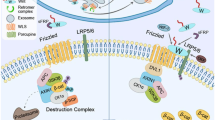Abstract
Generation of multiple cell types from embryonic stem (ES) cells and induced pluripotent stem cells is crucial to provide materials for regenerative medicine. EGAM1N has been found in preimplantation mouse embryos and mouse ES cells as a functionally unclassified homeoprotein. Recently, we reported that expression of EGAM1N suppressed the in vitro differentiation of ES cells into progenitor cells that arise in early embryogenesis. To clarify the effect of EGAM1N on terminal differentiation, embryoid bodies (EBs) were prepared from ES cells expressing exogenous Egam1n. In EBs expressing Egam1n, cardiomyogenesis was inhibited by impairing the expression of crucial transcription factors Brachyury T and Nkx2.5 in the generation of mesoderm and cardiomyocytes, respectively. Expression levels of Mef2c, another crucial gene for cardiomyogenesis, were unaffected. Conversely, the expression levels of Gata6 and Plat, markers for the primitive endoderm lineage, and Cdx2, a marker for the trophectoderm lineage, were increased. These results suggested that certain cell populations in EBs expressing Egam1n preferentially differentiated to such cell lineages. Our results suggest that EGAM1N not only affects the generation of progenitor cells during early embryogenesis, but also the progression of terminal differentiation, such as cardiomyogenesis, in mouse ES cells.



Similar content being viewed by others
References
Desbaillets I, Ziegler U, Groscurth P, Gassmann M (2000) Embryoid bodies: an in vitro model of mouse embryogenesis. Exp Physiol 85:645–651
Edmondson DG, Lyons GE, Martin JF, Olson EN (1994) Mef2 gene expression marks the cardiac and skeletal muscle lineages during mouse embryogenesis. Development 120:1251–1263
Iha M, Soma M, Sato S, Mori Y, Sugawara S, Kasuga K, Kojima I, Yamada S, Sakaki S, Kobayashi M (2012a) Severe inhibition of in vitro cardiomyogenesis in mouse embryonic stem cells ectopically expressing EGAM1C homeoprotein. Biosci Biotechnol Biochem 76:1410–1412
Iha M, Watanabe M, Kihara Y, Sugawara S, Saito K, Soma M, Sato S, Mori Y, Kasuga K, Kojima I, Sasamura R, Murata J, Kobayashi M (2012b) Effect of ectopic expression of homeoprotein EGAM1C on the cell morphology, growth, and differentiation in a mouse embryonic stem cell line, MG1.19 cells. Reproduction 143:477–489
Koike M, Kurosawa H, Amano Y (2005) A round-bottom 96-well polystyrene plate coated with 2-methacryloyloxyethyl phosphorylcholine as an effective tool for embryoid body formation. Cytotechnology 47:3–10
Lints TJ, Parsons LM, Hartley L, Lyons I, Harvey RP (1993) Nkx-2.5: a novel murine homeobox gene expressed in early heart progenitor cells and their myogenic descendants. Development 119:419–431
Niwa H (2007) How is pluripotency determined and maintained? Development 134:635–646
Niwa H, Ogawa K, Shimosato D, Adachi K (2009) A parallel circuit of LIF signalling pathways maintains pluripotency of mouse ES cells. Nature 460:118–122
Saito K, Abe H, Nakazawa M, Irokawa E, Watanabe M, Hosoi Y, Soma M, Kasuga K, Kojima I, Kobayashi M (2010) Cloning of complementary DNAs encoding structurally related homeoproteins from preimplantation mouse embryos: their involvement in the differentiation of embryonic stem cells. Biol Reprod 82:687–697
Saito K, Ogawa A, Toyofuku K, Hosoi Y, Soma M, Iha M, Kasuga K, Kojima I, Kobayashi M (2011) Relationships between homeoprotein EGAM1C and the expression of the placental prolactin gene family in mouse placentae and trophoblast stem cells. Reproduction 141:259–268
Saito K, Abe H, Nakazawa M, Irokawa E, Kasuga K, Kojima I, Murata J, Kobayashi M (2012) Ontogenic expression patterns of transcripts encoding EGAM1 homeoproteins during murine organogenesis. Biotechnol Biotechnol Equip 26:3321–3323
Sato S, Morita S, Iha M, Mori Y, Sugawara S, Kasuga K, Kojima I, Ozaki N, Muraguchi H, Okano K, Iwashita J, Murata J, Hosaka M, Kobayashi M (2013) Intact structure of EGAM1 homeoproteins and basic amino acid residues in the common homeodomain of EGAM1 and EGAM1C contribute to their nuclear localization in mouse embryonic stem cells. J Biosci Bioeng 116:141–146
Sato S, Nakazawa M, Kihara Y, Kubo Y, Sato Y, Kikuchi T, Nonaka A, Sasaki A, Iwashita J, Murata J, Hosaka M, Kobayashi M (2015) Partial inhibition of differentiation associated with elevated protein levels of pluripotency factors in mouse embryonic stem cells expressing exogenous EGAM1N homeoprotein. J Biosci Bioeng 120:562–569
Skerjanc IS, Petropoulos H, Ridgeway AG, Wilton S (1998) Myocyte enhancer factor 2C and Nk2–5 up-regulate each other’s expression and initiate cardiomyogenesis in P19 cells. J Biol Chem 273:34904–34910
Smith A (1991) Culture and differentiation of embryonic stem cells. J Tissue Cult Methods 13:89–94
Soma M, Iha M, Kihara Y, Sato S, Sato Y, Sato S, Mori Y, Sugawara S, Kasuga K, Kojima I, Kobayashi M (2012) Preferential emergence of cell types expressing markers for primitive endoderm lineages in mouse embryonic stem cells expressing exogenous EGAM1 homeoprotein. J Biosci Bioeng 114:342–346
Tanaka S, Kunath T, Hadjantonakis A, Nagy A, Rossant J (1998) Promotion of trophoblast stem cell proliferation by FGF4. Science 282:2072–2075
Vincentz JW, Barnes RM, Firulli BA, Conway SJ, Firulli AB (2008) Cooperative interaction of Nkx2.5 and Mef2c transcription factors during heart development. Dev Dyn 237:3809–3819
Acknowledgments
We thank Dr. Max Gassmann (University of Zurich, Zurich, Switzerland) for providing the pMGD20neo vector and MG1.19 cells.
Funding
This work was supported in part by a Grant-in-Aid for Scientific Research from the Japan Society for the Promotion of Science (JSPS KAKENHI No. 24580413) and the Akita Prefectural University President’s Research Project to M.K.
Author information
Authors and Affiliations
Corresponding author
Ethics declarations
Conflict of interest
The authors declare that they have no conflict of interest.
Additional information
A. Nonaka and M. Yoshida have contributed equally to this work.
Rights and permissions
About this article
Cite this article
Nonaka, A., Yoshida, M., Iha, M. et al. Exogenous expression of homeoprotein EGAM1N prevents in vitro cardiomyogenesis by impairing expression of T and Nkx2.5, but not Mef2c, in mouse embryonic stem cells. Cytotechnology 68, 2431–2436 (2016). https://doi.org/10.1007/s10616-016-9961-6
Received:
Accepted:
Published:
Issue Date:
DOI: https://doi.org/10.1007/s10616-016-9961-6




